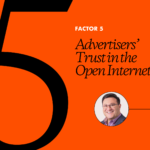Subscription models are on the up, and they show no signs of stopping. Zuora, the software firm driving the “subscription economy”, says subscription-based businesses powered through the chaos of 2020, experiencing average year-on-year revenue growth of 11.6%.
At a time when advertising revenue is sharply declining—newspaper ad revenue was down 30% year-on-year in 2020, according to Pew Research—the soaring popularity of subscription models is great news for online publishers.
Many are already cashing in: in the UK, Bauer, Hearst, and Dennis Publishing all saw 20-50% growth in subscription revenues in 2020, while Reuters finds that 21% of US adults now pay for at least one online news outlet.
With subscription models proving especially popular with younger generations—think of Netflix, Amazon Prime, Spotify, Birchbox — every online publisher should at least be considering a subscription model. But what’s the best way to acquire subscribers, and, more importantly, keep them signed up for the long term?
What drives readers to become subscribers?
The Reuters Institute Digital News Report for 2020 shows there’s no single overriding reason why people decide to subscribe to an online publication or news outlet. Instead, they found lots of different reasons, which means there are lots of strategies publishers can use to start building a base of loyal subscribers. Here are just a few to consider:
Access to quality content: This is the most common reason for subscribing, according to Reuters Institute. If readers feel that subscribing will give them access to the kind of distinctive content they can’t get for free elsewhere, it’s a strong driver for signing up.
Feeling part of a community: Publications that offer club-type memberships—with events, discounts, and special offers — often find it creates a “stickier” proposition than simply offering subscription content. According to InPublishing, that’s because it feels more like joining a community of like-minded individuals than simply paying to read something.
Appeal of individual journalists: Many journalists have developed sizeable followings on social media as well as in the publications they write for. If an individual journalist is popular enough, the prospect of being part of their “inner circle”—perhaps by receiving exclusive articles or essays from them, or invitations to AMAs — can be a good incentive to subscribe.
Societal benefits: Many people who subscribe to news publications do so because they feel it’s important to support and fund independent journalism that will hold the powerful to account. At a time when online misinformation and disinformation are causing demonstrable harm, there’s a growing urge to support and protect high-quality, trustworthy news sources.
Subscriber acquisition starts with knowing readers better
With so many different reasons to subscribe, how can publishers be sure they’re adopting the right subscriber acquisition strategy? A big part of it is getting to know readers better and understanding what they value about the publication and its content. Armed with a good idea of what readers want, publishers can create subscription offers that give them more of it.
That’s where the comments section can be a hugely valuable source of data. By looking at what individual readers comment about—and the kind of comments they leave—it’s possible to build up a picture of what readers are interested in and what keeps them coming back to the site. And because commenters are much more engaged than casual visitors, they offer a much better indication of what paying subscribers might want and expect.
The best data comes from registered commenters, who tend to stay longer, read more, and return more often. Understanding their preferences—for example, which articles or editorial team members they engage with most — is a great guide to where the core value of the publication lies.
What’s more, converting casual visitors to registered users is a good first step on the path to converting readers to subscribers. That’s because once readers have registered to comment, the publisher can then provide personalized subscription offers based on their known interests. (And that rich first-party data is ideal for aligning ad content with readers’ interests, too—especially as we head into a cookieless future.)
How OpenWeb helps publishers to improve acquisition
As a sophisticated third-party conversation and moderation platform, OpenWebOS is ideally placed to convert readers into registered users and start delivering insights into their on-site activity and interests. Here are three ways publishers can use OpenWebOS as part of a broader subscriber acquisition strategy:
Make it easy to register: OpenWebOS Identity is the engine we use to convert casual readers into registered users. It’s easy for publishers to use, as it integrates with all major SSO platforms and also enables third-party authentication via Google and social sign-ins.
Provide incentives to sign up: The OpenWebOS conversation platform is more than a commenting system: it’s a community hub where registered readers can forge relationships with other readers, get closer to editorial teams, and receive kudos for contributing to quality conversations. The incentives for registering are so high that our top publishers tell us over 30% of their new users come from OpenWeb registrations.
Know the best time to offer a subscription: Our platform uses predictive modeling to determine what the reader is likely to do next, so it can calculate the best time to present the reader with an engaging subscription offer.
Collect insights that drive subscriber growth: OpenWebOS makes it easy and inviting for users to create profiles of themselves — providing rich insights into reader demographics and preferences that can inform editorial strategy and fuel further acquisition.
The more publishers know about their readers, the easier it is to create subscription offers that win them over and keep them signed up long-term.
Converting casual readers into registered users with OpenWeb is a great place to start—and it comes with the added benefit of a 218% uplift in average revenue per user, and 450% greater user retention. Find out more about converting readers to subscribers with help from OpenWeb.


